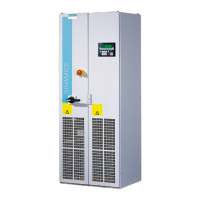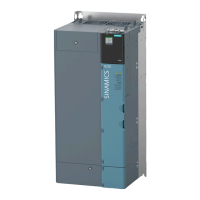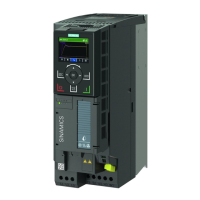Operation
7.19 Drive Control Chart (DCC)
SINAMICS DCP
380 Operating Instructions, 09/2019, A5E34382853K
7.19.2 CPU time load through DCC
Calculating the DCC blocks requires CPU time. If the CPU time becomes meager, you have
to check whether all the activated blocks are required and whether all the function blocks
used need to be computed within the same sampling time.
The CPU time load can be reduced by either deactivating blocks or assigning used blocks to
a runtime group with a longer sampling time.
A list of all of the DCC blocks available for SINAMICS DCP and the required computation
times are listed in the Appendix.
Table 7- 82 CPU time load of DCC blocks
6 ms 300 +30%
This information applies to the CUD without additional options. These options increase the basic
load of the CUD and reduce the available CPU time for the DCC blocks.
In this information, an average complexity of the blocks being used is assumed. If only highly
complex or very simple blocks are computed, the stated limit shifts accordingly.
Notes
● The actual CPU time load of the CUD can be read out in r9976. More information on the
CPU time load for SINAMICS DCP is provided in Chapter "CPU time load with SINAMICS
DCP (Page 372)".
● To make your own calculations, the previously illustrated CPU time loads can be taken to
be "linear". This means that:
– half as many blocks in the same time slice generate half as much CPU time load, etc.
– the same number of blocks in time slices half as fast generate half as much CPU time
load, etc.
Examples
1. In the 1 ms time slice, 50 blocks generate about 30 % additional CPU time load. For that
reason, 50 blocks in the 2 ms time slice generate about 30 % × 0.5 = 15 % additional
CPU time load.
2. In the 7 ms time slice, (300 + 400) / 2 = 350 blocks generate about 30 % additional CPU
time load. That means 250 blocks generate 250 / 350 × 30 % = 21.5 % additional CPU
time load.

